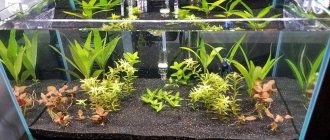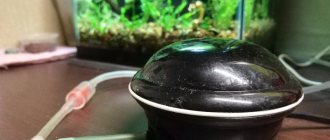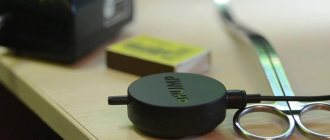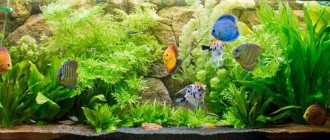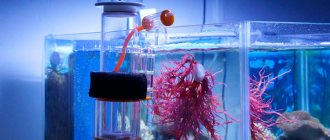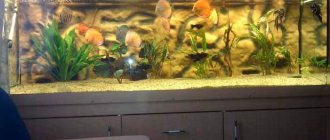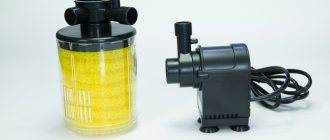An aquarium is not just an interior detail, but a full-fledged, artificially created ecosystem, the functioning of which requires serious care, including a regular supply of carbon dioxide. A CO2 supply system for an aquarium can be purchased at a pet store, but there are several simple ways to make a generator with your own hands: using mash and available accessories. To prepare mash, not only yeast is used, but also other reagents.
Applications of sparkling water
The simplest and most convenient way to replenish carbon dioxide deficiency, which helps in emergencies, is to use sparkling water. Soda sold in stores is actually an aqueous solution of carbon. It is clear that the water should be free of sweeteners, dyes, mineral elements and other ingredients that can harm aquarium inhabitants.
Using soda to saturate with carbon dioxide is effective only for small volume tanks - up to 50 liters. If the volume of the aquarium is larger, then the installation of a full-fledged generating device is required.
The CO2 concentration in the bottle, until it is depressurized, reaches 10,000 ml/l. After depressurization, the gas escapes, its content in bottled water drops sharply to 1500 ml/l, but this amount is more than enough to make up for the deficiency in the aquarium. To normalize the CO2 level, just pour 20 ml of soda into the tank.
The only significant disadvantage of using both mash and sparkling water is the inability to control the intensity of gas flow.
Why is CO2 needed in an aquarium: purpose and properties
Aquatic plants need carbon dioxide to maintain their vital functions. Fish do not exhale enough of it. This will only be enough for plants if the aquarium is dimly lit. If the light level increases, then the carbon dioxide resource will be exhausted quite quickly. Therefore, without an additional source of CO2, plant growth will simply stop.
Did you know? There was a long-lived eel that lived 88 years. 85 of them he lived in the aquarium of one of the museums in Sweden.
Making your own generator
A ready-made cylinder for generating carbon dioxide is not cheap, so many aquarium owners prefer to make a generating device with their own hands. To assemble the unit, you do not need special devices and tools, and it does not take much time. Even a beginner can cope with the task.
To assemble a homemade device you will need:
- 2 liter plastic bottle;
- Plastic container with a wide neck opening;
- Syringe;
- Dropper tube;
- Hose;
- Silicone sealant;
- Valve for creating back pressure;
- Fasteners;
- Spray nozzle.
Step-by-step instructions on how to properly make a generating unit:
- The plunger is removed from the syringe. Cut off the bottom part. A valve is inserted inside the syringe to regulate pressure.
- Take the cap from the bottle, carefully, with a well-sharpened knife, cut off the sides and other unnecessary parts.
- The structure of the syringe and valve is attached to the cap and sealed with silicone sealant. A small amount of water is poured into the structure. It turns out to be a counter of released gas bubbles.
- The counter is attached to a 2-liter bottle.
- The lid of the second container is perforated to attach the adapter. A hose is connected to the adapter inserted into the lid. Silicone sealant is used to secure the structure.
- The finished generator is filled with water.
- Hoses are used to combine parts into one structure. From a 2-liter bottle the end of the tube leads to the valve, from the adapter to the reservoir.
Reagents for generator operation
After installing the generating system, it is necessary to select and make a reagent that will be used to supply carbon dioxide to the tank. Many reagents that release CO2 have been invented:
- Take 200 g of sugar, a pinch of soda, half a teaspoon of ready-made fish food, yeast, rye bread. The ingredients are placed in a mash bottle, filled with warm water, leaving a few centimeters of free space to the edge. Braga produces carbon dioxide for a maximum of 2 weeks.
- Composition: 400 g sugar, 150 g soda, 150 g starch, pour 1 liter of water. The mixture is boiled until thick. After cooling, pour into a bottle. The product is enough to produce CO2 for 3 months.
- A good mash that lasts up to a month is prepared using gelatin. 30 g of the substance is poured into 0.5 liters of water and left until it swells. Pour in another 0.5 liters of liquid, add a tablespoon of soda. Heat the mixture over low heat until smooth. After cooling, pour into a fermentation bottle and add yeast.
- The most used recipe is using citric acid. Combine 10 g of acid and the same amount of soda.
Application of mash
A good way to make up for the deficiency of carbon dioxide in aquarium water is to use mash. Its production requires sugar and yeast. It is not advisable to use bread yeast; brewer's yeast is better.
The combined components are hermetically sealed in a container. During the fermentation process, gas is formed, which is necessary for the respiration of plant tissues.
How to make a fermentation system:
- Take two transparent plastic containers with a volume of about 2 liters.
- Pour yeast and sugar into one container and pour in water. The resulting mixture is hermetically sealed.
- The gas generator is connected to the separator using a hose or dropper tubes.
- In order for the gas to dissolve in water, a tube with a filter and a spray device are combined in the aquarium.
- The container may burst under pressure; to prevent such a nuisance, a valve is attached to the lid of the main container and inserted into the syringe. It turns out to be a counter of the number of gas bubbles formed.
The most convenient system includes two CO2 generators.
Why is CO2 deficient in an aquarium?
Look at the biotope of any natural fresh water body. There are usually few aquatic plants there, and they sit sparsely, and the bottom is covered with organic sediments, in which a variety of micro- and macroorganisms, mainly invertebrates, live in abundance. And there are plenty of fish and tadpoles... And all of them - from microorganisms that process bottom sediments to fish and frogs - release significant amounts of CO2 into the water. A different matter is a typical planted aquarium, which, as a rule, is densely planted with plants, and there are few and small fish in it (because most large fish spoil the plants). The usual population of our aquariums is small schooling characinka and guppies with platies, which, due to their small size and slow metabolism of carbon dioxide, emit very little carbon dioxide.
But in our ordinary aquariums there is plenty of light, and usually there is also enough nitrogen and phosphorus. So it turns out that CO2 becomes the “limiting factor”. Some plants, when deficient, are simply inhibited in growth and eventually die, while others have adapted to extract CO2 from minerals themselves, decomposing bicarbonates dissolved in any water. In this case, insoluble calcium salts are formed as a “by-product”, which fall out on the leaves of such plants in the form of a rough, unsightly crust (on which unicellular diatoms quickly settle). This trick can be performed by elodeas, anubias, hornworts and some other species that live naturally in stagnant bodies of water and are faced with periodic carbon dioxide deficiency there. So if we want the plants to look like in the pictures on the Internet, and not to be skinny, sad and drooping tails covered with limescale and algal growth, then willy-nilly we will have to think about adding carbon dioxide to the aquarium.
If you are accustomed to approaching such problems more meticulously, and my brief explanations do not convince you, I advise you to refer to the scientific article at this link, in which all this is explained in detail from the point of view of chemistry and biochemistry:
- Carbon dioxide and carbonate water system. Part 1.
- Carbon dioxide and carbonate water system. Part 2.
Let's move on to practice. But first, a little warning:
Gas spray devices
A generating plant would not be complete without a CO2 atomizer. The following is used as a spraying device:
- Rowan branches. Promote the formation of small bubbles. But they need to be changed frequently due to contamination.
- Pebbles. They create large bubbles, so not the best option.
- Bell-shaped caps that retain carbon dioxide.
- A glass diffuser is the best option if a soda solution of citric acid is used as a reagent.
- A labyrinth ladder along which carbon dioxide bubbles move, gradually releasing.
Lemon diet
Lemons have long been used as a means of combating excess weight. These fruits help improve digestion and accelerate the breakdown of fats. The acidic environment created in the stomach due to lemon juice is ideal for successful digestion of food. But that's not all! Lemons contain vitamin C, which is necessary for our health, as well as other vitamins and microelements that maintain the body’s condition at the proper level:
- vitamins A and B;
- boron;
- potassium;
- copper;
- zinc.
No wonder lemons are so popular as an immune booster!
Unfortunately, not everyone can use the lemon diet. You will have to give up trying to lose weight with lemons if you have high acidity of gastric juice, acute or chronic gastrointestinal diseases, hypertension or diabetes.
But let’s assume that your acidity is fine, your blood pressure isn’t bothering you, and all your health problems come down to a few obviously extra pounds. You can restore the lost slimness to your figure with the help of a healthy and tasty remedy - lemon water.
If your body weight is about 70 kilograms, take the drink according to this recipe: squeeze the juice of half a lemon into a glass, add cool water to the top and drink immediately.
For body weights over 80 kilograms, you will need the juice of the whole fruit, diluted with cool water to 250 milliliters.
Lemon drink tastes good on its own, but if you add lemon peel to the water used to prepare it and let it sit for about an hour, the drink will take on an absolutely delicious aroma.
Take the product twice a day, morning and evening, 30 minutes before meals. The morning intake must be on an empty stomach, then lemon water will break down fats much more effectively.
Precautionary measures
The owner of the aquarium must know how to use a homemade reactor so as not to harm the inhabitants of the underwater ecosystem:
- How much carbon dioxide is in aquarium water can be monitored using tests that are sold at the pet store. You can also install a drop checker to determine the degree of water hardness. The principle of operation of the device: the liquid in it turns yellow when there is excess CO2 content, green when it is normal, and blue when there is a deficiency. If there is an excess of carbon dioxide, fish suffocate and die; if there is a deficiency, plants suffer.
- When using a generator, you need to check the pH level of the water, since carbon dioxide lowers the acidity, which can cause discomfort in the fish.
- Photosynthesis does not occur without ultraviolet light, so you need to regulate the intensity and duration of the aquarium lighting.
- For active development, plants need not only carbon dioxide, but also mineral fertilizers.
- If there is excessive production of CO2 (more than 30 mg/l - a toxic dose for fish), the generator is removed and the operation of the aerator is increased. In severe cases, hydrogen peroxide is used.
Some aquarists use store-bought preparations to generate carbon dioxide, or create reactors at home using fire extinguishers and gas cylinders. However, working with pressure vessels is a dangerous undertaking and should not be attempted without experience.
Carbon dioxide is a key element for the full functioning of plants. To make a simple and effective CO2 generator, you need a minimum set of devices and tools, a little time and skill.
Permissible concentration levels
For all processes to occur correctly, a certain minimum amount of carbon dioxide molecules in water is needed.
Despite the fact that the inhabitants of the aquarium also emit this gas during their life, its amount is absolutely insufficient for photosynthesis to occur. Therefore, it is worth knowing how high the gas concentration should be so as not to oversaturate the water with it. This will not lead to anything good, since at night oxygen starvation may occur in living beings.
The indicator depends on the volume of the aquarium, but at the same time it obeys a law under which its average value can be derived. It is equal to 2-10 milligrams per liter. For standing reservoirs, values of 30 may be normal, but everything is too individual.
First of all, you need to know in what conditions the plants that were planted lived. If their usual state is a mild or almost absent flow, then you can add more carbon dioxide and not be afraid of overconsumption. If they appear only in water areas with a noticeable current, then you can reduce the dose and nothing bad will happen.
The minimum acceptable value is 3-5 milligrams, so the normal level for home use is 1 mg, which is unacceptable.

